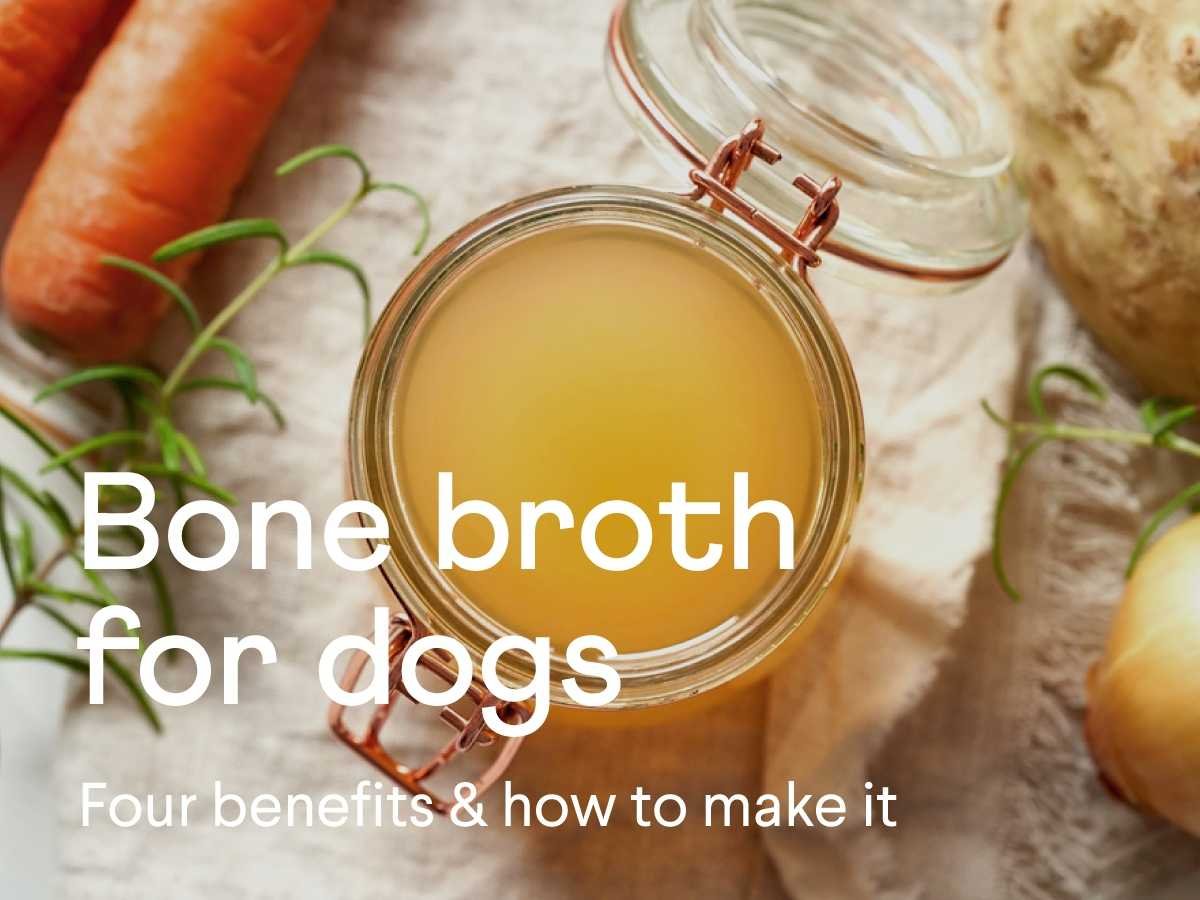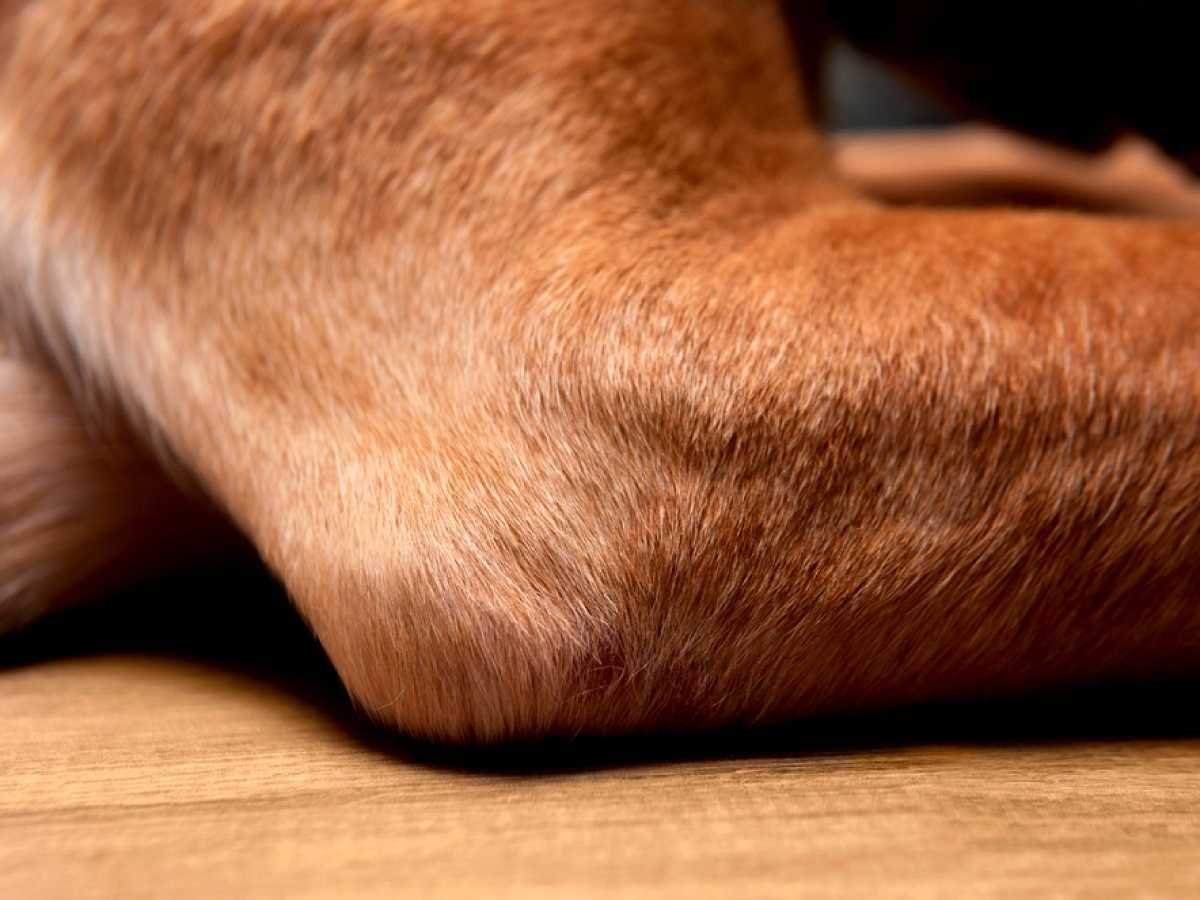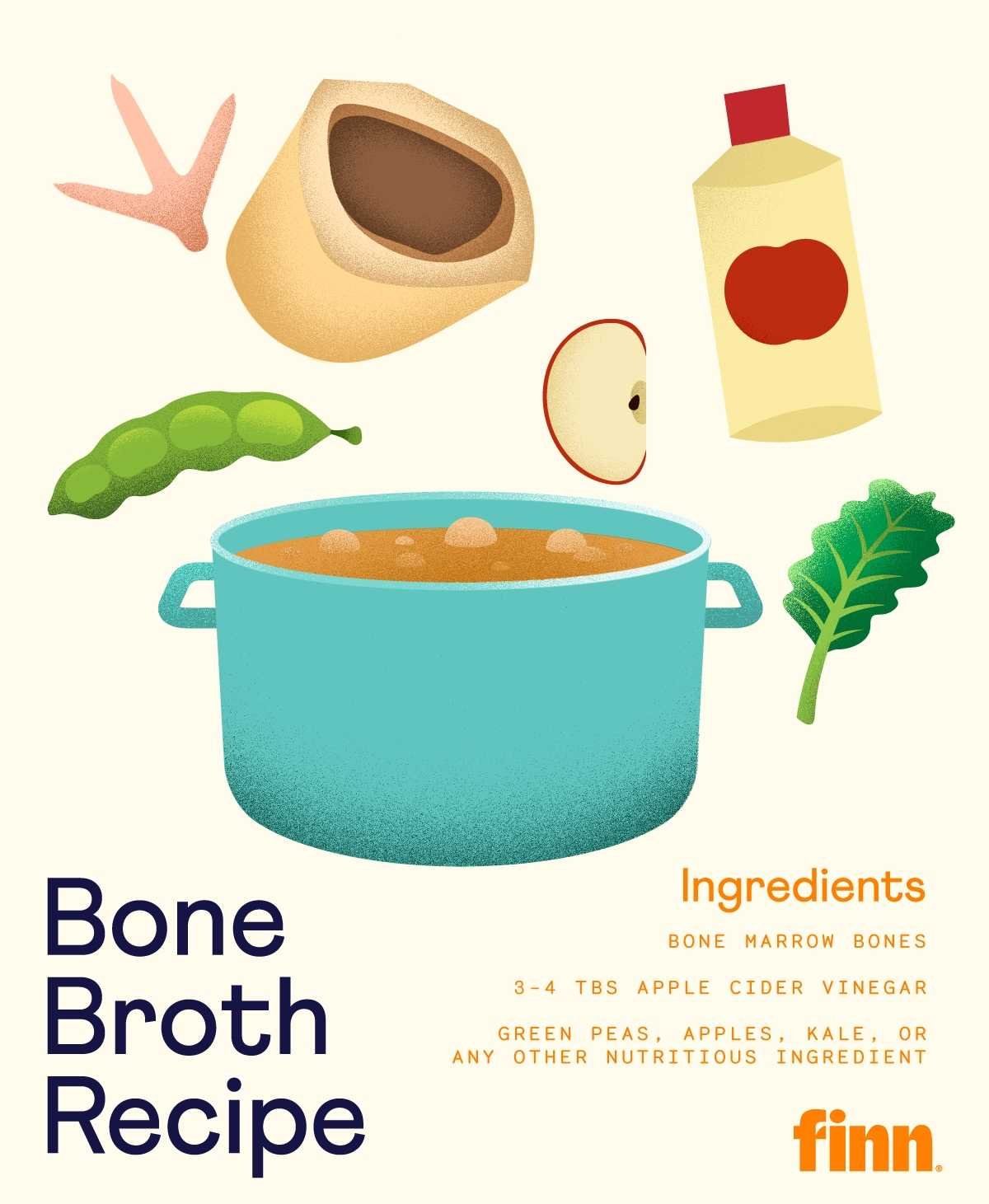Bone Broth For Dogs: 4 Benefits & How To Make It At Home
What is bone broth for dogs, and how can it benefit your pet? Finn has everything you need to know and a recipe for how to make it yourself.
Table of Contents:
It’s no secret that dogs love bones…
…Unfortunately, as our pets age, they often experience problems with their teeth. Over time, chewing on bones goes from being an exciting treat to something that causes them pain.
If you’re wondering how to give your pup all the nutrients that bones contain without the risk of toothaches, then you are in the right place!. We have a recipe to make it yourself and more information about why you want to add it to your dog’s diet. Bone broth is a customizable, delicious, nutritious treat that any dog would love to add to their diet. Plus, it’s easier than you might think!
What Is Bone Broth?
Bone broth has become a hot topic of conversation, and more and more people have started to incorporate its benefits into their daily routine. But what exactly is it?
Bone broth, just like other types of broth (beef, chicken, etc.), is a liquid made from the bones and connective tissue of animals. The broth is highly nutritious, as it takes all of the positive benefits of bone marrow and condenses it into a thick, drinkable form. Much of its thickness is due to the gelatin that forms as the bones are boiled down.
There isn’t a specific type of bone used in bone broth. That makes it very customizable, especially for dogs with food allergies. For example, beef and chicken are more common allergens for dogs, but bone broth is also made of fish, lamb, duck, or bison bones.
What Are the Benefits of Bone Broth for Dogs?
Aside from its delicious taste, there are far more benefits to bone broth for dogs. Using the broth appropriately can add a lot of improvements to your dog’s health, especially if you know how to use it to target their specific issues.
#1) Bone Broth May Help Your Dog’s Joints
A few core components are essential for healthy, functional joints. Collagen is arguably one of the most critical components, as it makes up a large percentage of the joints, bones, ligaments, and tendons.
Collagen is a specialized protein that makes up most of the protein found in the body. It is made out of amino acids and, along with chondroitin, glucosamine helps protect the health and stability of your dog’s joints.
Remember that bone broth for dogs can not “solve” joint issues entirely. Joint problems resulting from a previous injury are likely permanent, as are those stemming from genetic predispositions.
#2) Bone Broth May Help Detox the Liver
Detox may have become a buzzword, but there are plenty of benefits to helping your dog’s liver be more efficient and get rid of toxins. Toxins are often invisible to the naked eye, so it can be hard to protect your dog from all of the different ways they can encounter them.
Bone broth can help support liver function and the immune system in general so that it can do the work of protecting your dog from the onslaught of the world around them.
#3) Bone Broth Can Help Protect the GI System
The anatomy of your dog’s GI system works in a way that helps digested nutrients pass from the stomach to the rest of the body. Specifically, the intestines have millions of microscopically small holes for this exact purpose. Under normal circumstances, when your dog’s health is functioning at its best, those holes do precisely what they were made to do.
However, those holes may get bigger during stress or illness (or due to a poor diet). At times, they can grow so big that things start to pass through them that aren’t supposed to. Veterinarians call this leaky gut syndrome, and it can lead to potentially serious nutritional deficiencies.
Due to its thick consistency, bone broth can help plug up some of those holes and allow more nutrients to make their way into your dog’s system.
#4) Bone Broth May Help Your Pup When They’re Feeling Under the Weather
Although we don’t like to think about it, every dog will get sick at least a few times during their hopefully very long lives. One of the worst parts of having an ailing furry family member is that they can’t tell us what is bothering them.
By the time they show signs, they’ve not been feeling well for a while, and their immune system has taken a hit. For dogs experiencing vomiting or diarrhea, it’s crucial to alter their diet temporarily to help meet their needs.
Bone broth can play the same role for your pet that chicken soup does for you when you’re not feeling good. It gets some much-needed calories in their system without being too heavy and making the problem worse. In some situations, just the smell and novelty of bone broth is enough to help dogs develop an appetite.
Bone broth also contains another amino acid known as glycine. Glycine can help regulate the amount of gastric acid in the stomach, aiding digestion and reducing the likelihood of your dog having too much bile in their system.
Our Recommended Bone Broth Recipes
If you’re interested in adding bone broth to your dog’s diet, the best way to do it is by making the broth yourself. Commercial bone broth is full of sodium, which can be more harmful than helpful to your pup’s wellness.
Bone broth is made by simmering the ingredients over low heat for an extended period, which you can do in a slow cooker or on the stove. Bone marrow bones are the most frequently used, but other bones and connective tissues can be added to their broth: pig or chicken feet, turkey necks, and gizzards are just a few examples.
The key to making a beneficial bone broth is the use of raw bones. Although you can use cooked bones, they don’t offer many nutrients..
Fill your pot with the bones and other parts, then cover them with water. You’ll also want a few inches of water above them, as the water will evaporate as they simmer. Now it’s time to add the magic ingredient — raw apple cider vinegar. Three to four tablespoons should be fine. This is an important step, as it helps pull out the nutrients from the bones.
After you’ve added everything, bring the water to a boil. If you’re using a slow cooker, leave it for an hour. If you’re making your broth on the stove, watch for it to start condensing.Then you’ll turn it down to low and let it go for the rest of the day (some people who use slow cookers let it cook for about 24 hours, which wouldn’t be safe to do on a stovetop).
Once your broth is finished cooking, strain out the bones and any meat or tissue that may have fallen off of them. It’s best to throw these pieces away and resist the temptation to feed them to your pet, as they can be a choking hazard.You can also add other nutritious ingredients at this step — apples, kale, and green beans are just a few good choices.
Ta-da! – You’ll be left with a delicious bone broth for dogs without the same added sodium of commercial bone broths.
If you’re unsure if it is safe to feed your pet, do some research or contact your veterinarian before feeding your dog.
A Nutritional FYI
Bone broth for dogs can be a great addition to their diet, but veterinarians do not consider it nutritionally complete. It is best to use it as a supplement to your dog’s food and not in place of it. Try pouring it over their food to moisten it, freeze it and give it as a treat, or share a bowl with them as a snack!
That way, they can enjoy all the benefits of bone broth without losing out on any essential vitamins and minerals that their body needs.
If your dog has not had bone broth before, make sure to start slow. Although uncommon, your dog can have an allergic reaction to certain ingredients.
Any new addition to your dog’s diet can also trigger GI issues, specifically diarrhea. That’s why it’s essential to introduce new foods slowly and monitor your dog for their reaction. If they do experience diarrhea or excess gas, you may want to stop giving your dog bone broth, at least temporarily, and consult your veterinarian.
To Wrap Up
Bone broth for dogs can be the perfect, low-calorie way to add vitamins and minerals to their diet. Instead of letting them chew on bones that can hurt or even break their teeth, give them all the benefits without any of the emergency dental bills.
For more tips on how to improve your dog’s quality of life, physically and mentally, stick with Finn. We’d love to help you make every day of your dog’s life their best day yet.
Sources:
Components of the Musculoskeletal System in Dogs - Dog Owners | Merck Veterinary Manual



